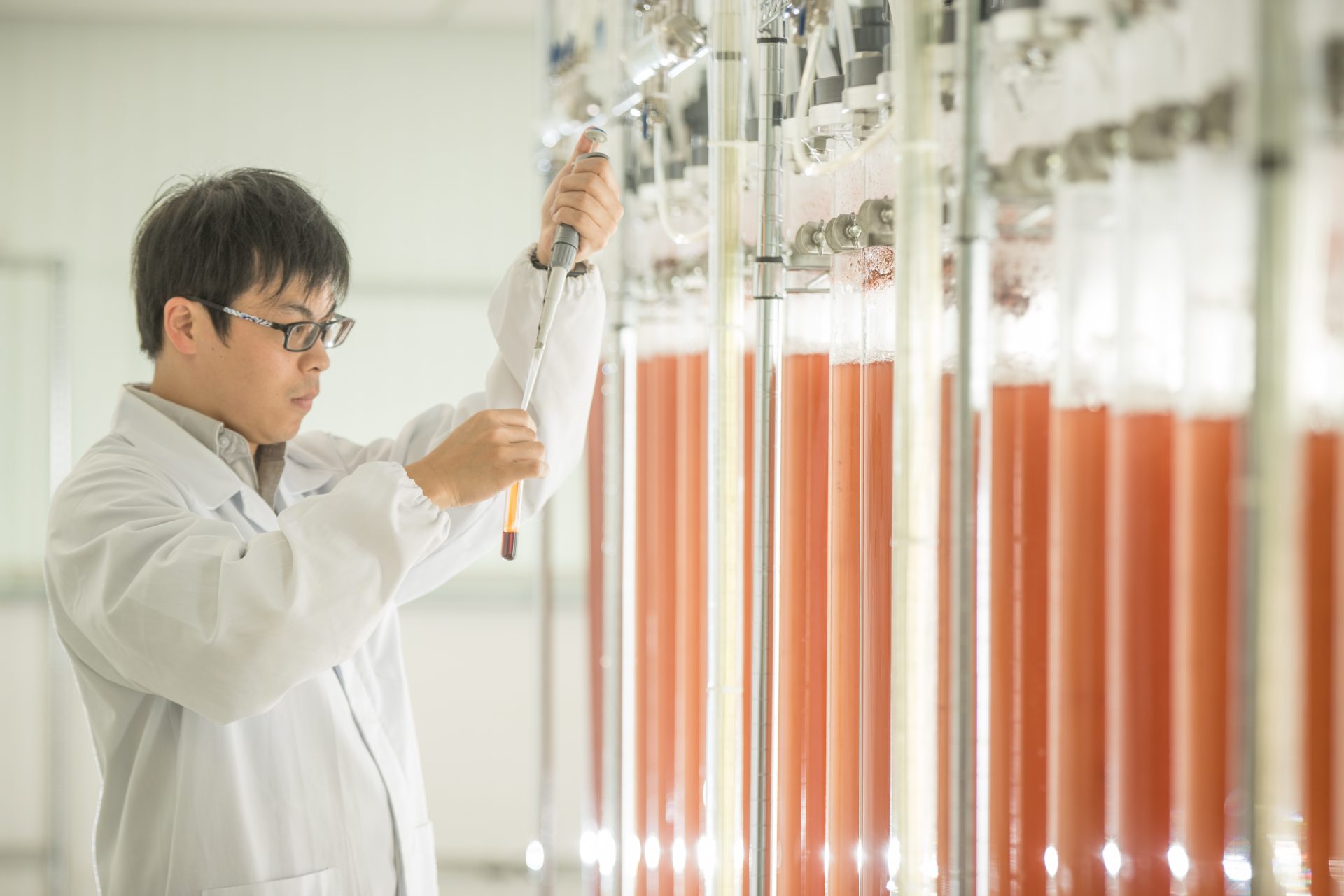
Limestone, an ingredient for producing cement, is used as the absorbent that can effectively separate the CO2 from the emissions during the process of producing cement. The captured carbon can be reused to nurture microalgae Haematococcus pluvialis that has rich content of astaxanthin which can be extracted and is edible. With this, we created the first algae infused, carbon cutting green noodles and other skin care products to expand a new business model for cement companies.
( English provided by company. )
By 2030, the world needs to reduce carbon emissions by 45% (using 2011 as a base year). In particular, carbon capture and storage (CCS) is generally recognized as one of the most feasible methods of achieving this, which is why TCC has actively sought to develop related technologies during the past 10 years.
A Pioneering Microalgae Carbon Sequestration System
Hoping Power Plant and Hoping Cement Plant were designed with circular economy concepts. Calcium looping capture technology, microalgae low-carbon energy technology, and the use of carbon in the production of astaxanthin products are combined to produce innovative carbon capture, utilization and storage (CCUS) methods.
CO2 Reusing Creates Innovative Value of Haematococcus Pluvialis
After capturing carbon, we chose a microalgae fixation system due to microalgae’s capacity to store 10 times as much carbon as trees and the capacity of the microalgae Haematococcus pluvialis to use CO2 as a photosynthetic fuel source to produce the valued chemical astaxanthin. With only 1 kg of Haematococcus pluvialis is able to absorb 1.83 kg of CO2. The Company also cooperated with the Industrial Technology Research Institute’s Biomedical Technology Laboratory to research the antioxidant benefits of astaxanthin. Preliminary results suggest that astaxanthin has the potential to slow cell ageing, repair retinal damage, and possibly even prevent the onset of Alzheimer’s disease.
An Innovative B2B2C Solution for Reducing Carbon Emissions
Astaxanthin-rich Haematococcus algae is a natural health food nurtured by carbon. Seeking ways to use the algae without extracting the astaxanthin, the Company cooperated with the Industrial Technology Research Institute to produce algae infused, carbon cutting green noodles. In addition to direct consumption of the algae, we used energy efficient methods to extract the astaxanthin and developed a series of astaxanthin-rich astarose products.
Benefits
- Up to 2018, the accumulation of capturing carbon dioxide is 355 metric tons, 400 units of astaxanthin-rich astarose products, 1,000 astaxanthin nori and soba noodles gift boxes, and NT$56,000 donated to World Vision Taiwan from the Taroko Gorge Marathon’s charity activities.